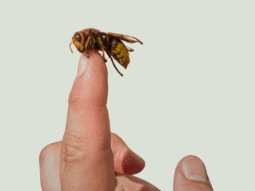
When most people think of pest control, they picture summer months filled with mosquitoes, wasps, and ants marching across picnic blankets. But here in the South, winter doesn't mean pests pack up and leave. Our mild winters, with temperatures that rarely dip below freezing for long, create a year-round hospitality suite for unwanted guests. As the temperature drops even slightly, pests don't hibernate: they simply move indoors, seeking the warmth, food, and shelter our homes provide.
We've seen it time and again: Southern homeowners let their guard down once November rolls around, assuming the pest battle is over until spring. That's a costly mistake. Winter is actually a critical time for pest control in our region. Rodents, roaches, spiders, and other critters become more aggressive in their search for cozy accommodations, and our homes check all their boxes. Understanding winter pest behavior and taking proactive steps now can save you from infestations, property damage, and health risks down the line.
Do I Need Pest Control in Winter?
The South's subtropical and temperate climate creates a unique pest control challenge that Northern states simply don't face. While our neighbors up north enjoy a hard freeze that kills off or forces pests into true dormancy, we're dealing with 50-degree days in January and occasional warm snaps that keep pest activity humming along. In McKinney and the Dallas-Fort Worth area, we regularly see rodent activity spike in December and January. Along the Gulf Coast in Slidell, the humidity keeps cockroaches active year-round, even during the mildest cold snaps.
Pests don't need much of an invitation. A small crack in your foundation, a gap under the garage door, or even the warmth radiating from your home's exterior walls can signal to rodents and insects that your house is the perfect winter retreat. Once inside, they reproduce quickly. A single female mouse can have five to ten litters per year, with each litter containing five to six babies. Cockroaches? They're even more prolific. We've documented German cockroach populations doubling every 30-40 days in untreated Texas homes during winter months
Beyond the "ick factor," winter pests pose real risks. Rodents chew through electrical wiring, creating fire hazards. They contaminate food and spread diseases like hantavirus and salmonella. Cockroaches trigger allergies and asthma, particularly in children. Spiders, while often beneficial outdoors, can bite when cornered, and some species common to the South pack a painful or medically significant punch.
There's also the structural concern. Pests that nest in walls, attics, and crawl spaces can damage insulation, drywall, and wood framing. In Tyler, we've seen rodent-damaged insulation reduce home energy efficiency by 30-40%, driving up winter heating costs by hundreds of dollars. By the time you notice the problem in spring, you might be looking at costly repairs on top of pest removal.
Winter pest control isn't just about eliminating current invaders, it's about preventing the next wave. The pests that overwinter in your home are the breeding stock for spring and summer infestations. By addressing the problem now, we're breaking the cycle before it starts.
What Pests Are Active in Winter?
Let's talk about the usual suspects. Knowing what you're up against is half the battle.
How to Get Rid of Mice in Winter
Mice and rats are the quintessential winter invaders. They're drawn indoors by dropping temperatures and the promise of food. Mice can squeeze through openings as small as a dime, while rats need only a quarter-sized gap. During our free home inspections in the Dallas-Fort Worth area, we find an average of 12-15 potential rodent entry points per home—most homeowners are shocked when we show them gaps they never noticed around garage doors, foundation vents, and utility penetrations. Once inside, they nest in wall voids, attics, basements, and even behind appliances.
You'll know you have rodents if you spot droppings (small, dark pellets), hear scratching sounds in walls or ceilings at night, or find gnaw marks on food packaging, wood, or wires. They also leave greasy rub marks along walls where they travel repeatedly. Rodents are creatures of habit, following the same routes night after night.
Do Cockroaches Go Away in Winter?
Cockroaches thrive in the South's humidity, and winter doesn't slow them down, it just pushes them deeper into our homes. German cockroaches, in particular, love kitchens and bathrooms where moisture and food scraps are plentiful. American cockroaches (the big ones, sometimes called "palmetto bugs") often enter from sewer lines or crawl spaces. In Austin and San Antonio, the limestone soil and older home foundations create perfect entry points for these pests. Slidell homeowners near water sources face particularly aggressive cockroach pressure due to proximity to moisture-rich environments.
These pests are nocturnal, so if you flip on the kitchen light at 2 a.m. and see one scurry away, there are likely many more hiding nearby. Our pest control rule of thumb: for every cockroach you see, assume 20-50 more are hiding in walls, cabinets, and appliances. In Slidell's humid climate, we've treated homes where German cockroach populations exceeded 2,000 individuals—all stemming from a few roaches that entered the previous winter. Cockroaches reproduce rapidly and carry bacteria that contaminate surfaces and food.
Why Are There Spiders in Your House in Winter?
Spiders follow their food source, which means if you have other insects in your home, spiders won't be far behind. Common winter spiders in Southern homes include brown recluses, wolf spiders, and cellar spiders. While most are harmless, the brown recluse's bite can cause significant tissue damage. Brown recluses are particularly common in Central Texas—our San Antonio and Austin teams encounter them often in our free home inspections. We've helped hundreds of families safely eliminate brown recluse populations from storage areas, closets, and attics without incident.
Spiders favor dark, undisturbed areas, closets, basements, attics, and storage boxes. You might not see them often, but their webs are a telltale sign of their presence.
Are Ants Active During Winter Months?
Yes, ants in winter. While their activity does slow down somewhat, Southern winters are mild enough that ants remain active, especially indoors. Odorous house ants and Argentine ants are particularly common. Texas homeowners also contend with fire ants, which remain active during mild winters in Austin, Tyler, and throughout Central Texas. These aggressive ants can infiltrate homes through the smallest foundation cracks. They're attracted to sugary foods and moisture, often trailing into kitchens and bathrooms in search of crumbs or leaks.
Ants are social insects, and where you see one, a colony of thousands is nearby. Winter is an excellent time to target ant colonies before they explode in population come spring.
How to Prevent Pests from Entering Your Home in Winter
An ounce of prevention really is worth a pound of cure. The best pest control strategy starts with making your home as uninviting as possible.
How Do Pests Enter Homes in Winter?
Walk around your home's exterior and look for gaps, cracks, and openings. Pay special attention to:
- Foundation cracks: Even hairline cracks can widen over time and admit pests.
- Gaps around pipes and utility lines: Where plumbing, electrical, or HVAC lines enter your home, seal gaps with caulk or expanding foam.
- Door sweeps and weatherstripping: Gaps under doors are highways for mice and insects. Install or replace worn weatherstripping.
- Window screens: Repair tears and ensure screens fit tightly.
- Roof vents and chimneys: Use mesh screens to keep rodents and birds out.
Sealing isn't a one-and-done job. We recommend inspecting your home's exterior every fall and addressing any new openings. During our seasonal pest exclusion services, the Romex team seals an average of 8-12 entry points per home. Homes built before 1990—common throughout McKinney, Tyler, and older San Antonio neighborhoods—typically require more extensive sealing due to foundation settling and aging construction materials.
How Does Humidity Affect Winter Pest Problems?
Pests need water to survive, and the South's humidity provides plenty. Gulf Coast homes in Slidell face unique challenges with year-round humidity levels that create ideal cockroach breeding conditions. In contrast, Central Texas locations like Austin and San Antonio experience drier winters but still deal with moisture accumulation in poorly ventilated spaces. But you can tip the scales in your favor:
- Fix leaks promptly: Dripping faucets, leaky pipes under sinks, and roof leaks create ideal conditions for cockroaches and silverfish.
- Use dehumidifiers: Basements, crawl spaces, and bathrooms benefit from reduced humidity.
- Improve ventilation: Exhaust fans in kitchens and bathrooms help remove moisture.
- Clear gutters: Clogged gutters cause water to pool near your foundation, attracting pests and potentially causing structural issues.
Dry homes are far less attractive to pests. It's that simple. In our Gulf Coast service area around Slidell, we've seen cockroach activity drop by 60-70% when homeowners combine professional treatment with dehumidification in crawl spaces and proper ventilation improvements.
How Should I Store Food and Sanitize My Home in Winter?
Pests are opportunistic feeders. Denying them easy meals goes a long way:
- Store food in airtight containers: This includes pet food, which rodents and ants love.
- Clean up spills immediately: Even a few crumbs or a sticky spot can attract pests.
- Take out trash regularly: Don't let garbage sit overnight, and use bins with tight-fitting lids.
- Don't leave pet food out: Feed pets on a schedule and remove bowls when they're done.
- Declutter: Pests love hiding in clutter, stacks of boxes, piles of laundry, or unused furniture provide perfect nesting spots.
A clean, organized home disrupts pests' ability to find food and shelter, making them far less likely to stick around.
What's the Best Indoor Pest Control Strategy for Winter?
Even with the best prevention, pests can sometimes breach your defenses. That's when treatment comes into play.
DIY vs. Professional Pest Control: What Works in Winter?
After treating over 50,000 homes across Texas, Oklahoma, Mississippi, and Louisiana, we believe in using the right tool for the job. For families with young children or pets, we've successfully eliminated rodent problems using mechanical traps and exclusion methods alone—no chemicals required. However, severe German cockroach infestations typically require professional-grade baits and insect growth regulators that aren't available to consumers. Our integrated approach has achieved a 96% customer satisfaction rate because we match the treatment to your specific situation and comfort level. Sometimes that's a natural solution: other times, chemical treatments are necessary for effective control.
Natural options include:
- Diatomaceous earth: A fine powder that damages insects' exoskeletons, causing dehydration. Sprinkle it in cracks, crevices, and behind appliances.
- Essential oils: Peppermint oil can deter rodents and spiders. Soak cotton balls and place them in problem areas.
- Boric acid: Effective against cockroaches and ants when applied in thin layers in areas where pests travel.
- Traps: Snap traps, glue boards, and live traps can manage rodent populations without chemicals.
Chemical treatments are often necessary for severe infestations:
- Baits: Rodent bait stations and ant baits allow pests to carry poison back to their nests.
- Insecticides: Sprays and dusts formulated for specific pests can provide targeted control.
- Fumigation: For serious, widespread infestations, professional fumigation may be required.
Always follow label instructions carefully and consider the safety of children and pets. When in doubt, consult a professional.
How to Tell If You Have a Winter Pest Problem
Catching an infestation early makes all the difference. We recommend:
- Regular inspections: Check basements, attics, crawl spaces, and under sinks monthly.
- Set monitoring traps: Even if you don't have an active infestation, placing a few traps in high-risk areas helps you spot problems early.
- Look for signs: Droppings, gnaw marks, shed skins, and unusual odors are red flags.
- Pay attention to pet behavior: Dogs and cats often notice pests before we do. If your pet is suddenly fixated on a wall or baseboard, investigate.
Early detection means smaller infestations, less damage, and lower treatment costs.
How to Keep Pests Away from Your Home's Exterior in Winter
Your home's exterior is the first line of defense. What happens outside directly affects what happens inside.
Start with your yard. Keep grass trimmed and vegetation cut back from your home's foundation. Overgrown shrubs and mulch piled against siding create perfect hiding spots and highways for pests. We recommend maintaining at least an 18-inch clearance between plants and your home's exterior.
Woodpiles are a major attractant for rodents, termites, and spiders. Store firewood at least 20 feet from your home and elevate it off the ground. Inspect logs before bringing them inside, you'd be surprised how many pests hitch a ride on firewood.
Outdoor lighting can draw insects, which in turn attract spiders. Consider switching to yellow or sodium vapor lights, which are less attractive to bugs. Also, position lights away from doors and windows when possible.
Bird feeders and pet food left outside are open invitations to rodents and other wildlife. If you feed birds, use feeders that minimize spills and clean up fallen seed regularly. Never leave pet food outdoors overnight.
Check your home's exterior for standing water, even small amounts. Birdbaths, clogged gutters, and low spots in your yard can become mosquito breeding grounds during warm winter days.
Finally, inspect and maintain outdoor structures, sheds, garages, and barns. These often have more gaps and openings than your main home and can serve as staging areas for pests planning an indoor invasion.
How Winter Pest Problems Vary Across Texas, Oklahoma, Mississippi, and Louisiana
While the principles of winter pest control remain consistent, each region faces unique challenges:
North Texas (McKinney, Dallas-Fort Worth): Cold snaps drive rodents indoors aggressively. Homes built on slab foundations see more pest pressure through garage entries and utility penetrations.
Central Texas (Austin, San Antonio): Fire ants remain active during mild winters. The limestone soil common to the Hill Country creates natural pathways for pests through foundation cracks.
East Texas (Tyler): Higher humidity and dense vegetation create year-round spider and mosquito pressure. Homes near wooded areas face increased rodent activity in winter.
Gulf Coast Louisiana (Slidell): Extreme humidity and proximity to water sources make this region particularly susceptible to cockroaches, moisture-loving insects, and termites that remain active through winter.
No matter your location, the fundamentals of sealing entry points, managing moisture, and maintaining sanitation apply—but understanding your region's specific pest pressure helps you prioritize efforts.
Why You Need Romex Pest Control in the Winter
DIY pest control has its place, but there's a point where professional help becomes necessary, and often, that point comes sooner than homeowners realize.
We bring expertise that comes from years of dealing with Southern pests in all seasons. We know their behavior, breeding cycles, and hiding spots. That knowledge translates into faster identification, more effective treatments, and better long-term prevention.
Romex Pest Control uses integrated pest management (IPM) strategies that combine inspection, treatment, and prevention. We don't just spray and leave: we identify the root causes of your pest problems and address them comprehensively. That might mean sealing entry points, eliminating moisture sources, or applying targeted treatments in areas where pests live and breed.
Our treatments are family- and pet-friendly when applied correctly. We use EPA-approved products and follow strict application guidelines. Plus, we stay current on the latest pest control technologies and methods, ensuring you get the most effective solutions available.
Winter treatments are particularly strategic. By controlling pests now, we prevent the population explosions that typically occur in spring and summer. You're not just solving today's problem: you're preventing tomorrow's.
We also provide ongoing monitoring and maintenance plans. Pest control isn't a one-time event, it's an ongoing process. Regular service visits allow us to catch new issues before they become infestations and adjust strategies as needed.
When Should I Call a Pest Control Company?
So, when should you pick up the phone and give Romex Pest Control a call? Here are the situations where professional help is essential:
You've tried DIY methods without success. If you've been battling the same pest problem for weeks with no improvement, it's time to call in the experts. Persistent infestations often have hidden sources or require treatments not available to consumers.
You're seeing pests during the day. Most pests are nocturnal. If you're spotting cockroaches, rodents, or other critters during daylight hours, it usually indicates a large population, there's too much competition for resources at night, forcing some individuals out during the day.
You notice structural damage. Gnawed wires, holes in walls, damaged insulation, or wood that sounds hollow when tapped can all indicate serious pest activity that needs immediate professional attention.
You have health concerns. If anyone in your household has allergies, asthma, or compromised immunity, professional pest control is especially important. We can use methods that minimize exposure to allergens and ensure thorough elimination of pests that trigger health issues.
You're preparing to sell your home. Pest problems can derail real estate transactions. A professional pest inspection and treatment before listing gives buyers confidence and can prevent deal-breaking surprises during the inspection period.
You want preventative protection. You don't have to wait for an infestation. Many homeowners work with us on a preventative basis, scheduling regular treatments to keep pests from ever gaining a foothold.
Don't wait until a small problem becomes a big one. We offer free inspections to assess your situation and recommend the right course of action. There's no obligation, and you'll get honest advice about what you need, and what you don't.
Professional vs DIY Winter Pest Control: What Actually Works?
Facing a winter pest problem, most homeowners wonder whether they can handle it themselves or need professional help. After treating over 15,000 pest issues across Texas and Louisiana, we've seen both approaches succeed—and fail—depending on the situation. Here's how to know which route will actually solve your problem.
| Factor | DIY | Professional (Romex) |
|---|---|---|
| Cost | $50-200 per treatment | $200-500 per treatment |
| Time to Results | 2-8 weeks | 1-3 days |
| Success Rate | 40-60% for minor issues | 90-95% first visit |
| Best For | Prevention, single pest sightings | Active infestations, recurring problems |
DIY Pest Control: When It Works
DIY approaches excel at prevention and addressing isolated pest sightings before they become infestations. Store-bought traps, natural repellents, and exclusion methods cost $50-200 and work well for homeowners who catch problems early.
Effective DIY pest control requires consistent effort. You're not just setting traps—you're monitoring daily, adjusting placement, maintaining sanitation, and reapplying products. Budget 30-60 minutes weekly for monitoring and maintenance. Most homeowners underestimate this time commitment, which is why DIY efforts often fail not because the products don't work, but because follow-through lapses.
Choose DIY When:
- You've spotted 1-2 pests total (not daily sightings)
- You're focused on prevention, not active elimination
- You have time to monitor and adjust over 4-6 weeks
- Your home has minimal entry points and good existing defenses
Professional Pest Control: When It's Necessary
Professional treatments use commercial-grade products with active ingredients at concentrations 2-5 times stronger than consumer formulations. Licensed technicians have access to professional products unavailable in retail stores—not because they're more dangerous, but because they require training for proper application. A professional treatment eliminates 85-95% of target pest populations within 24-72 hours of the first service.
Professional exterminators use products like Suspend SC, Demon WP, and Cy-Kick CS for general pests—these contain active ingredients (deltamethrin, cypermethrin) at 4-10% concentrations versus the 0.5-1.5% in consumer sprays. This isn't about using "more poison"—it's about achieving effective kill rates with fewer applications.
A trained technician identifies pest species, entry points, nesting locations, and conducive conditions in a single 30-45 minute inspection. This expertise matters because German cockroaches require different treatment than American cockroaches. Mouse behavior differs from rat behavior. What looks like an ant problem might actually be termites.
Misidentification wastes weeks. We regularly meet homeowners who've been treating "ants" for a month, only to discover they're actually termite swarmers—completely different pest, completely different solution, and now structural damage has progressed.
Choose Professional When:
- You're seeing pests daily or during daytime hours
- DIY methods haven't worked after 2-3 weeks
- You have children, pets, or family members with allergies/asthma
- You've found structural damage (gnawed wires, holes in walls)
- You're preparing to sell your home
Year-Round Pest Protection for Southern Homes
Winter pest control in Southern homes isn't optional, it's essential. Our mild winters keep pests active year-round, and as temperatures drop, they're actively seeking the warmth and resources your home provides. From rodents and cockroaches to spiders and ants, these unwanted guests can cause property damage, spread disease, and create uncomfortable living conditions.
The good news? You're not powerless. By sealing entry points, managing moisture, maintaining proper sanitation, and implementing both indoor and outdoor prevention strategies, you can significantly reduce your home's appeal to pests. And when DIY efforts aren't enough, professional help from Romex Pest Control ensures comprehensive, effective solutions tailored to your specific situation.
Winter is the time to act. The pests that overwinter in your home become next season's breeding population. By controlling them now, you're setting yourself up for a more comfortable, pest-free year ahead. We're here to help, with the expertise, tools, and commitment to keep your Southern home protected in every season.
Frequently Asked Questions
Why is winter pest control important for Southern homes?
Southern winters are mild enough that pests remain active year-round. As temperatures drop, rodents, cockroaches, and spiders move indoors seeking warmth, food, and shelter. Controlling winter pests prevents spring infestations by eliminating breeding populations before they multiply.
What are the most common winter pests in the South?
The most common winter pests include rodents (mice and rats), cockroaches (German and American species), spiders (including brown recluses), and ants. These pests remain active during Southern winters due to mild temperatures and seek indoor shelter.
How can I prevent rodents from entering my home during winter?
Seal all entry points including foundation cracks, gaps around pipes and utility lines, and spaces under doors. Install door sweeps and weatherstripping, and use mesh screens on vents and chimneys. Mice can squeeze through dime-sized openings.
When should I call a professional pest control service for winter pests?
Call professionals if DIY methods fail, you see pests during daytime hours, notice structural damage like gnawed wires, have health concerns like allergies, or want preventative protection. Persistent infestations often require treatments unavailable to consumers.
Do cockroaches go away in winter months?
No, cockroaches don't disappear in winter, especially in the South. The region's humidity and mild temperatures allow them to thrive year-round. Winter actually drives them deeper indoors to kitchens and bathrooms where moisture and warmth are abundant.
What health risks do winter pests pose to my family?
Rodents spread diseases like hantavirus and salmonella while contaminating food. Cockroaches trigger allergies and asthma, especially in children. Rodents also chew electrical wiring, creating fire hazards, and some Southern spider species deliver medically significant bites.
We hope you enjoy these informational articles. If you'd like to learn more about our eco-friendly pest control services, call (844) 955-2447.
Read More
Your Path to a Pest-Free Home or Business
Romex Pest Control
We are committed to protecting you, your children, and your pets with our eco-friendly, child-friendly, and pet-friendly guaranteed pest control solutions.
Romex Pest Control is fully insured and licensed in Texas, Oklahoma, Louisiana, and Mississippi.
Service Areas:
Hours
M-F 8 am–5 pm
Sat 8 am–2 pm
Sun Closed
Established 2016 © Copyright 2025 Romex Pest Control










